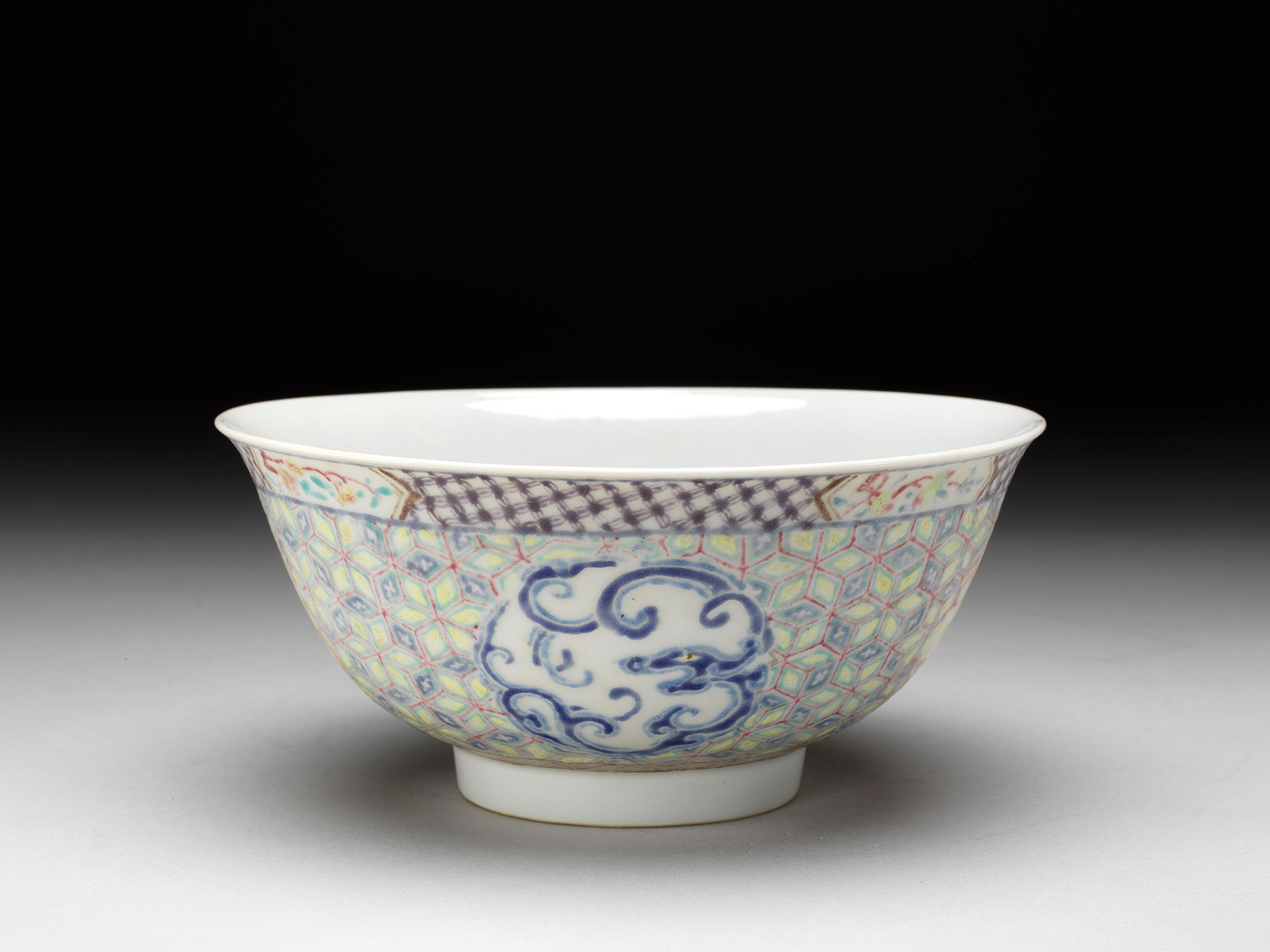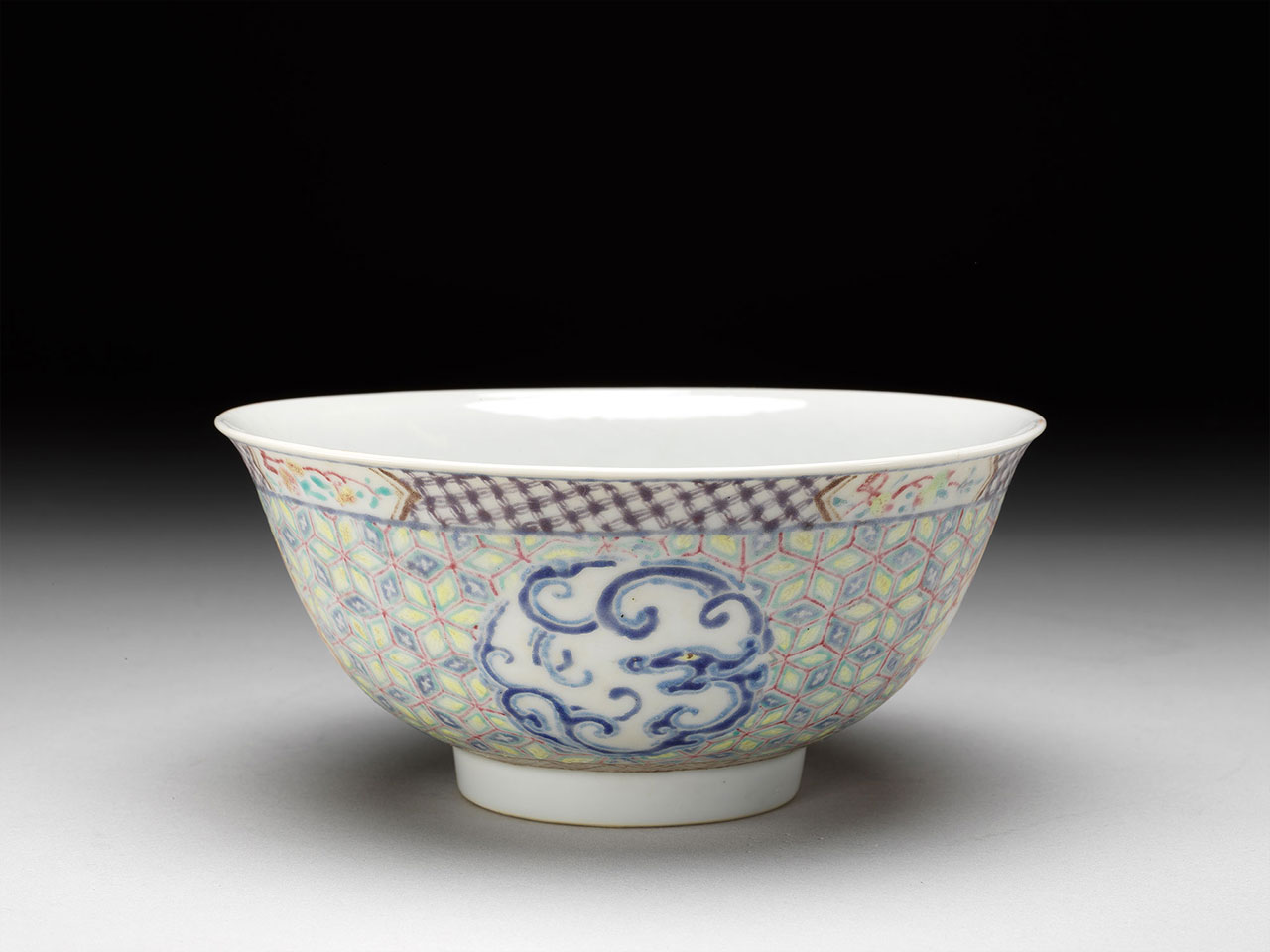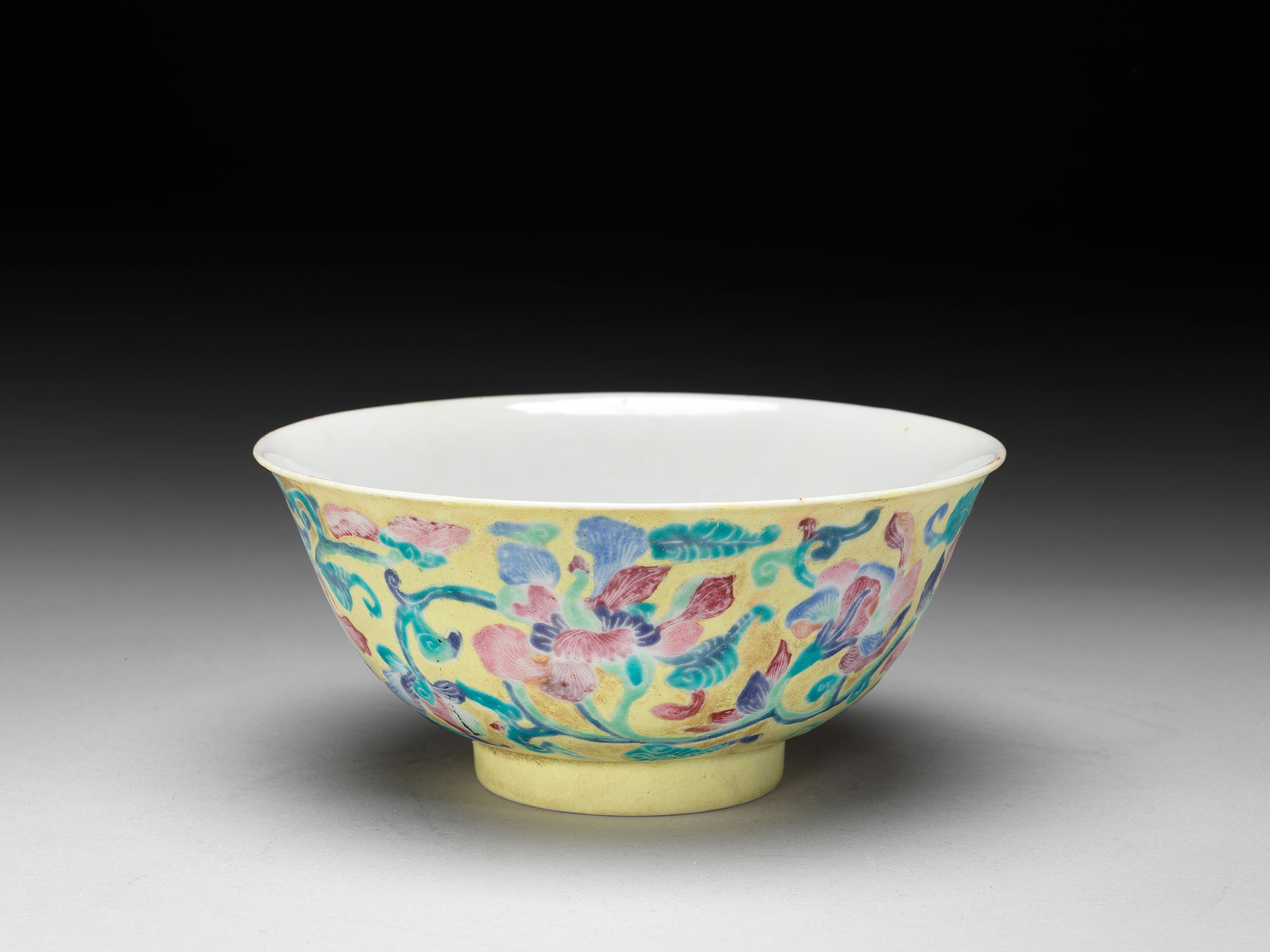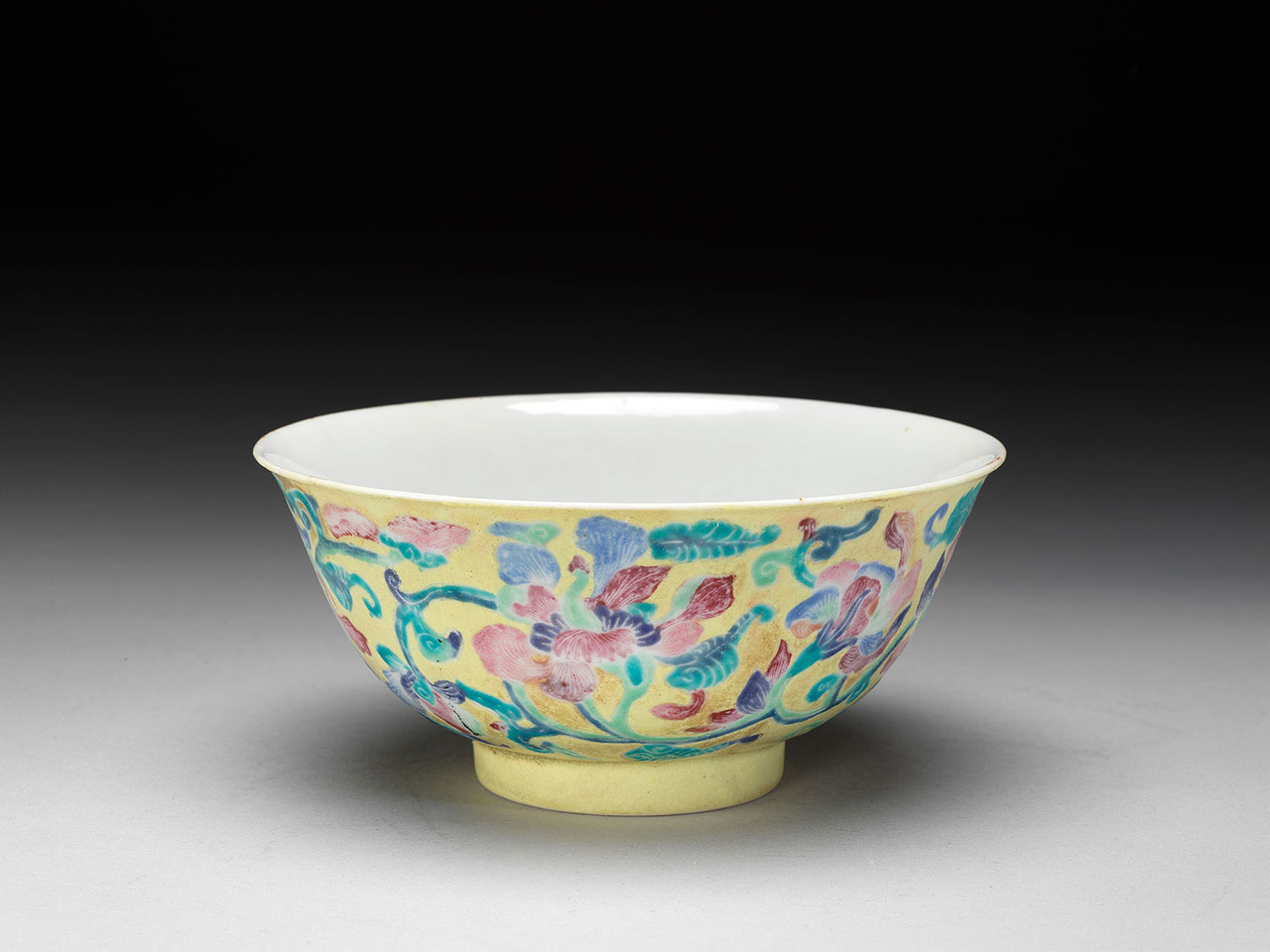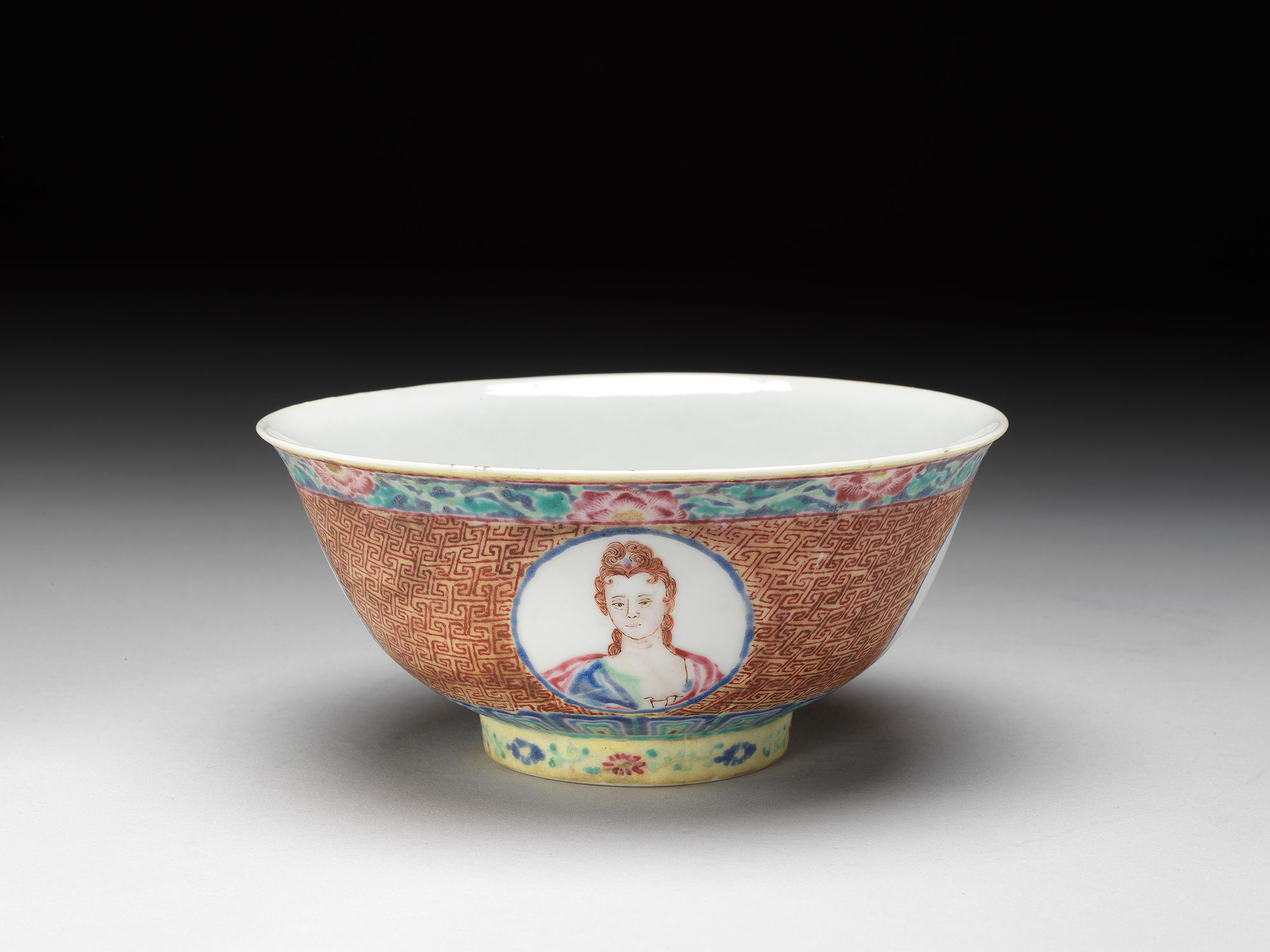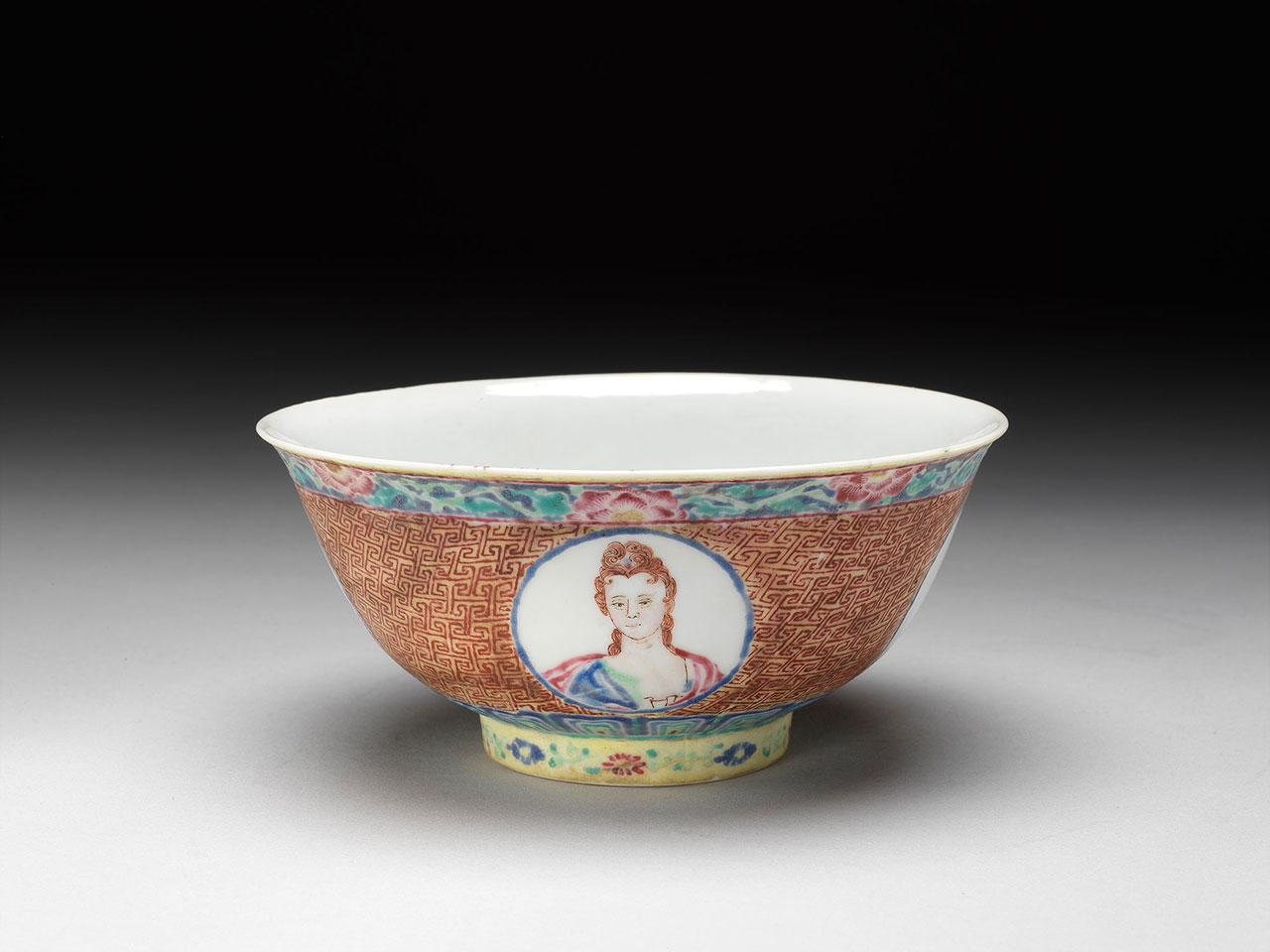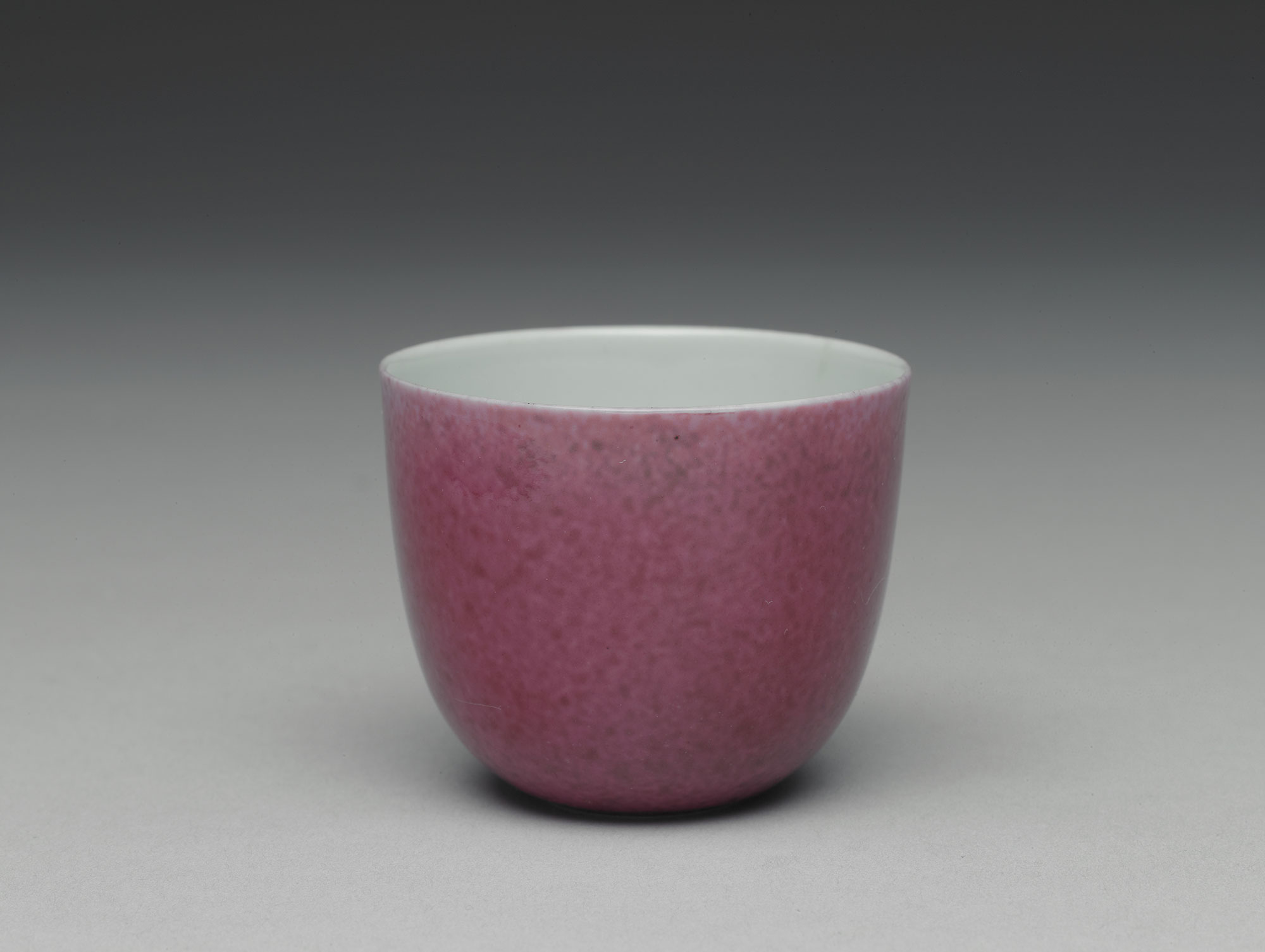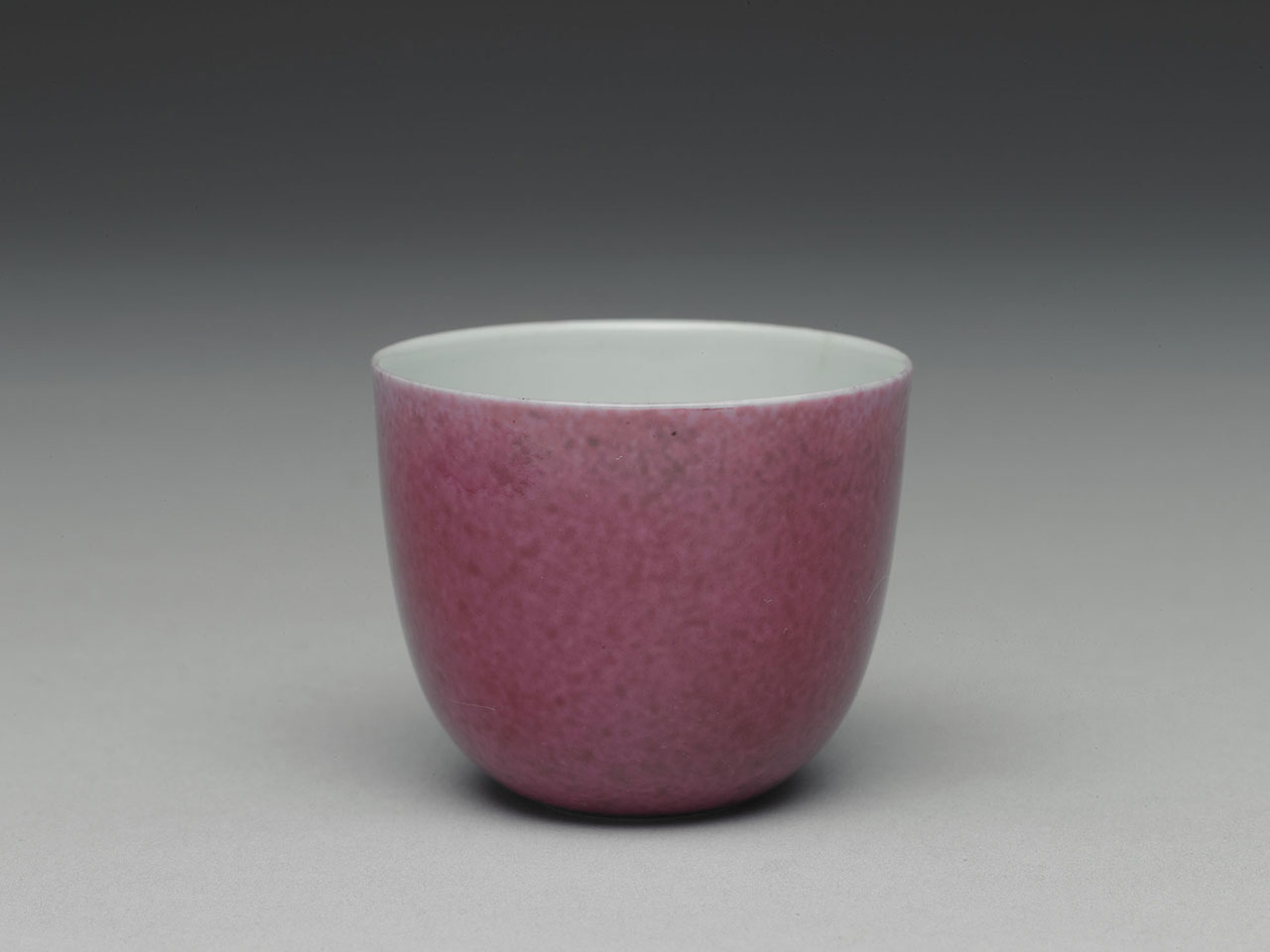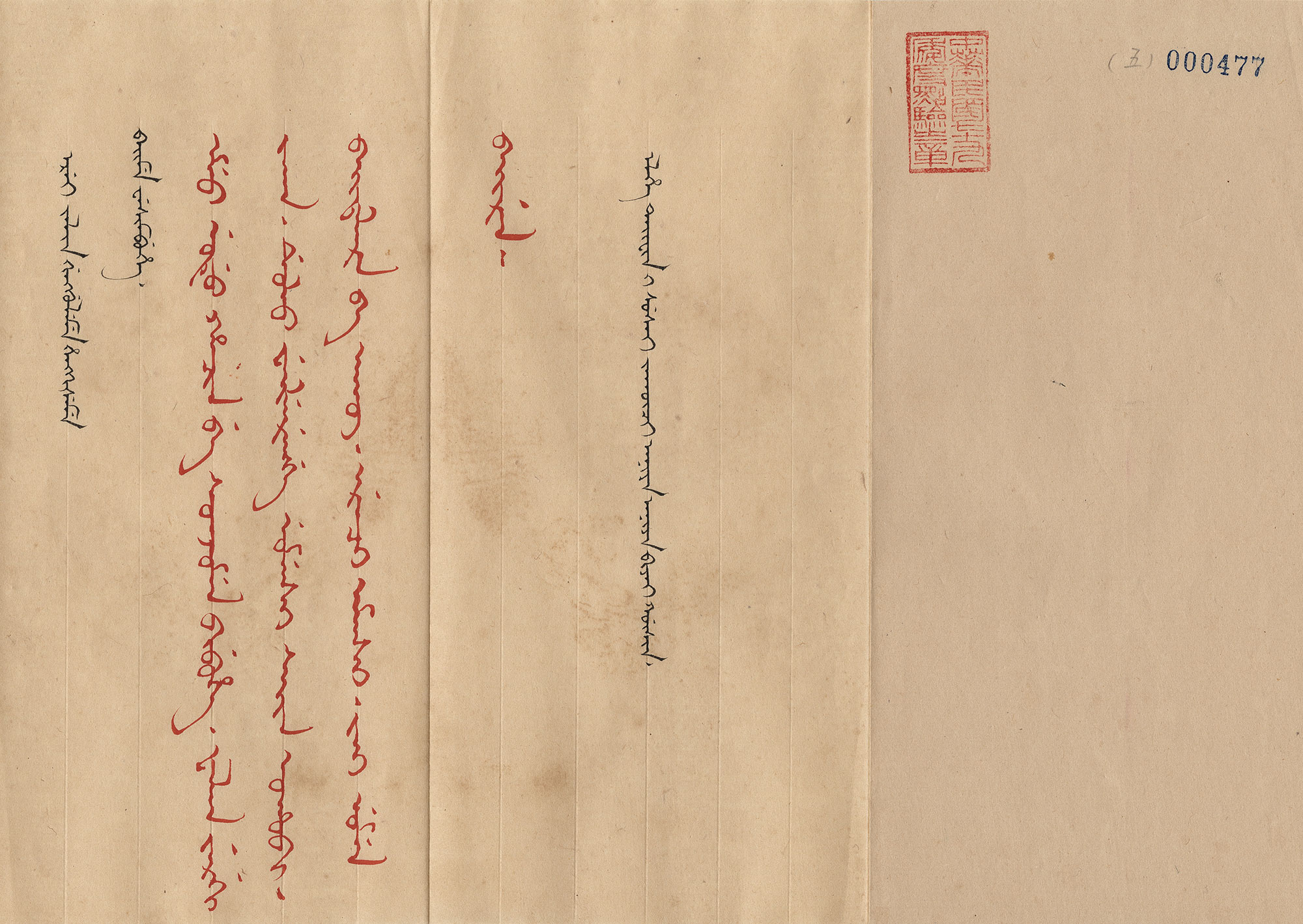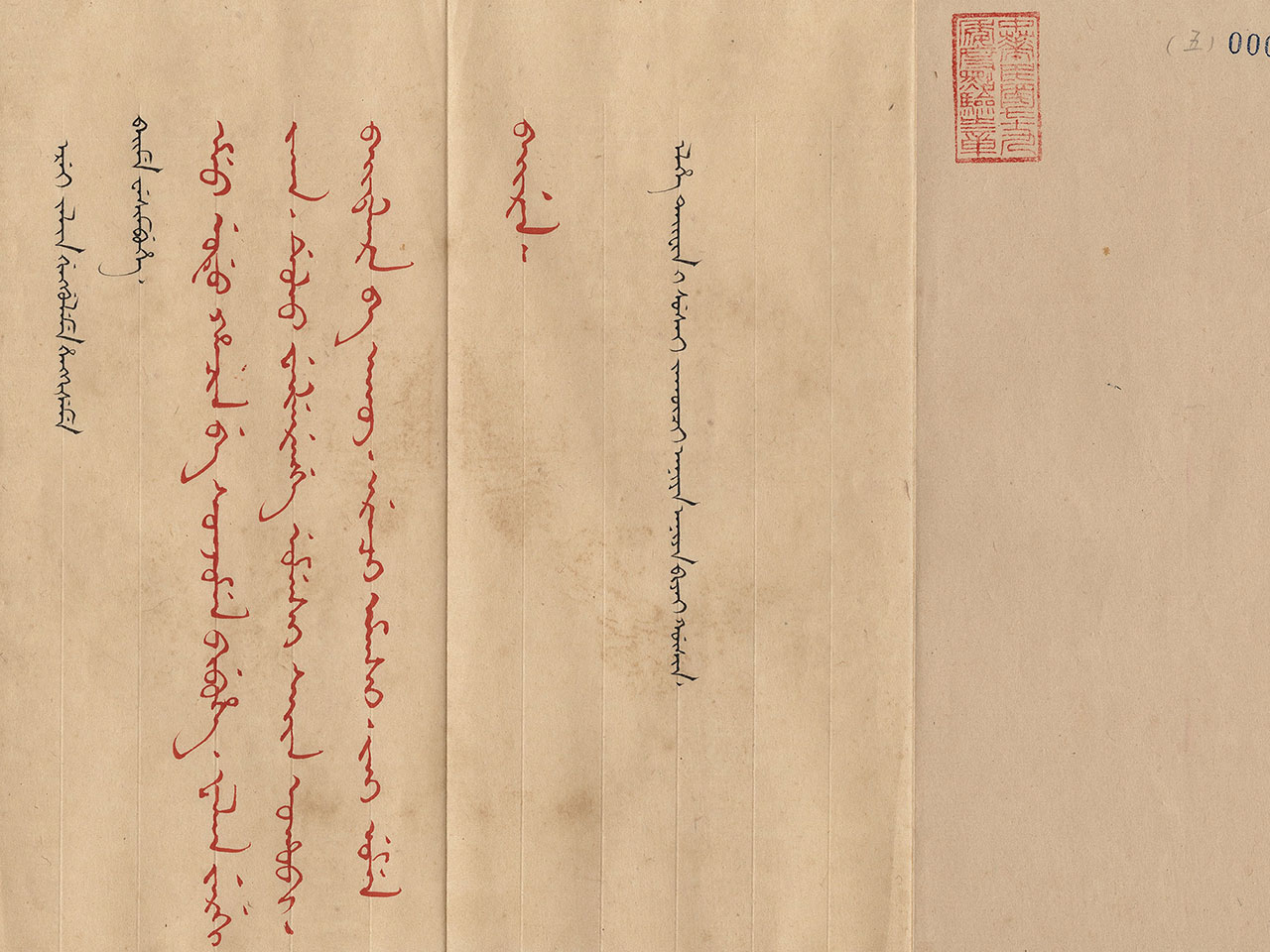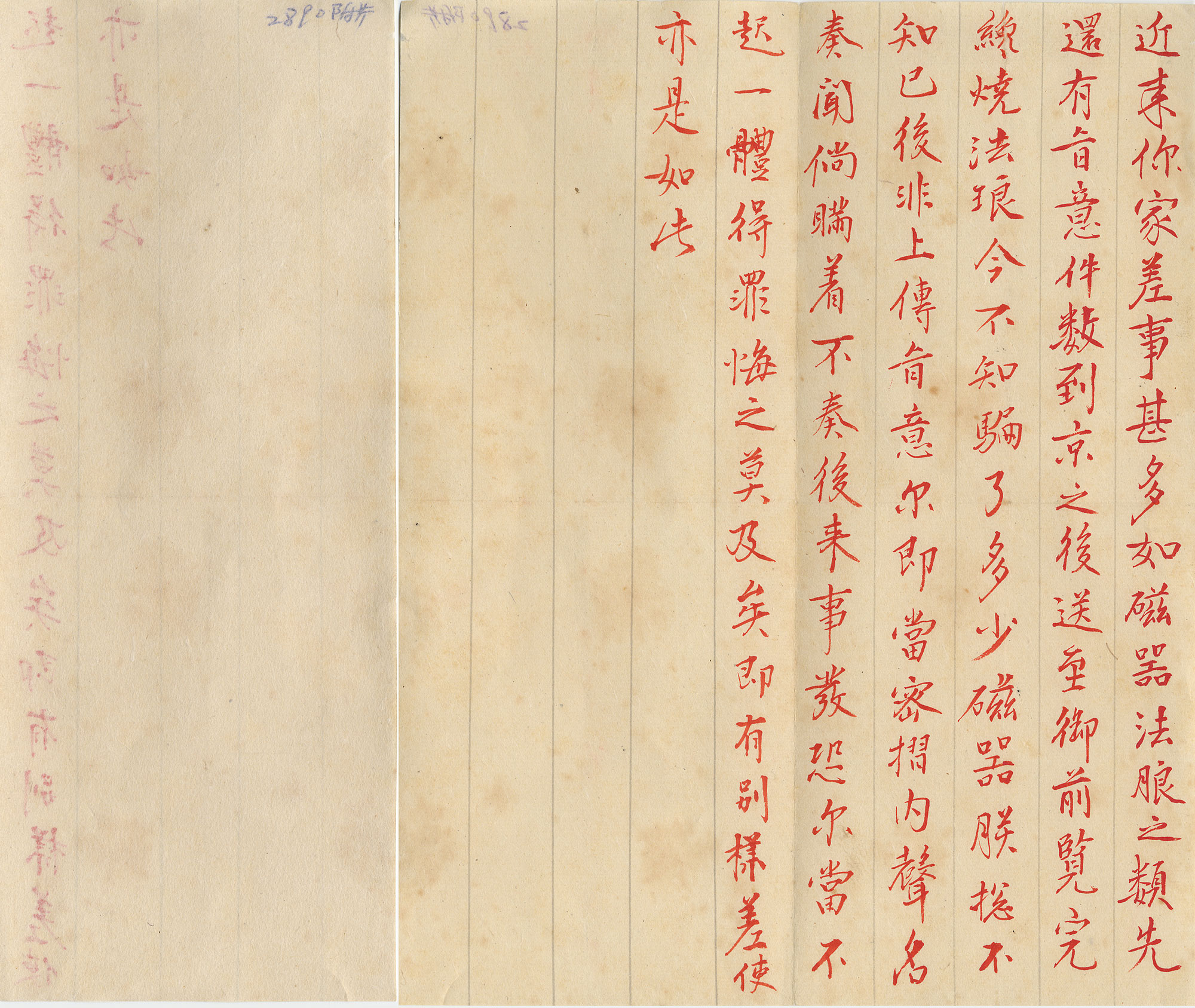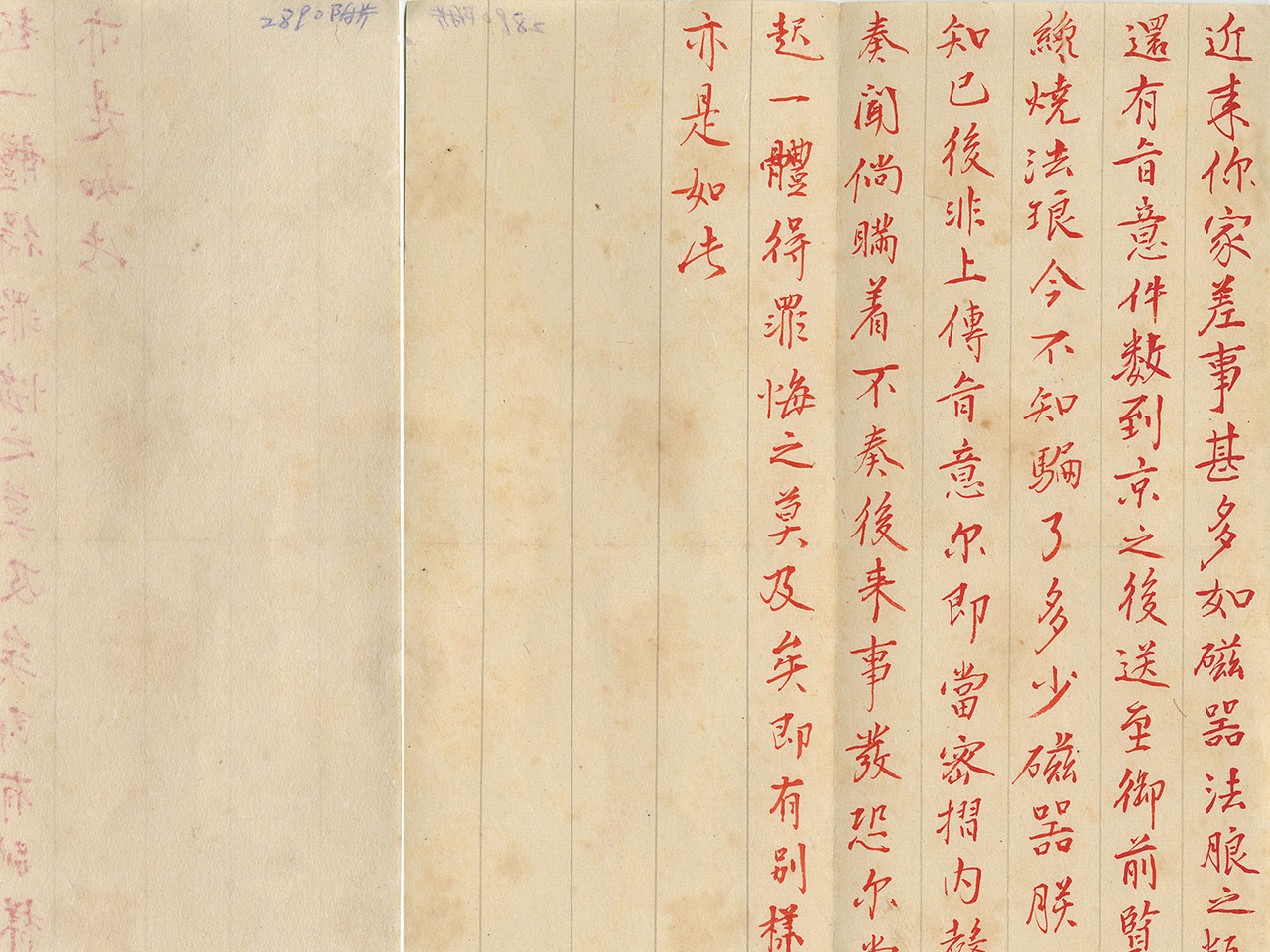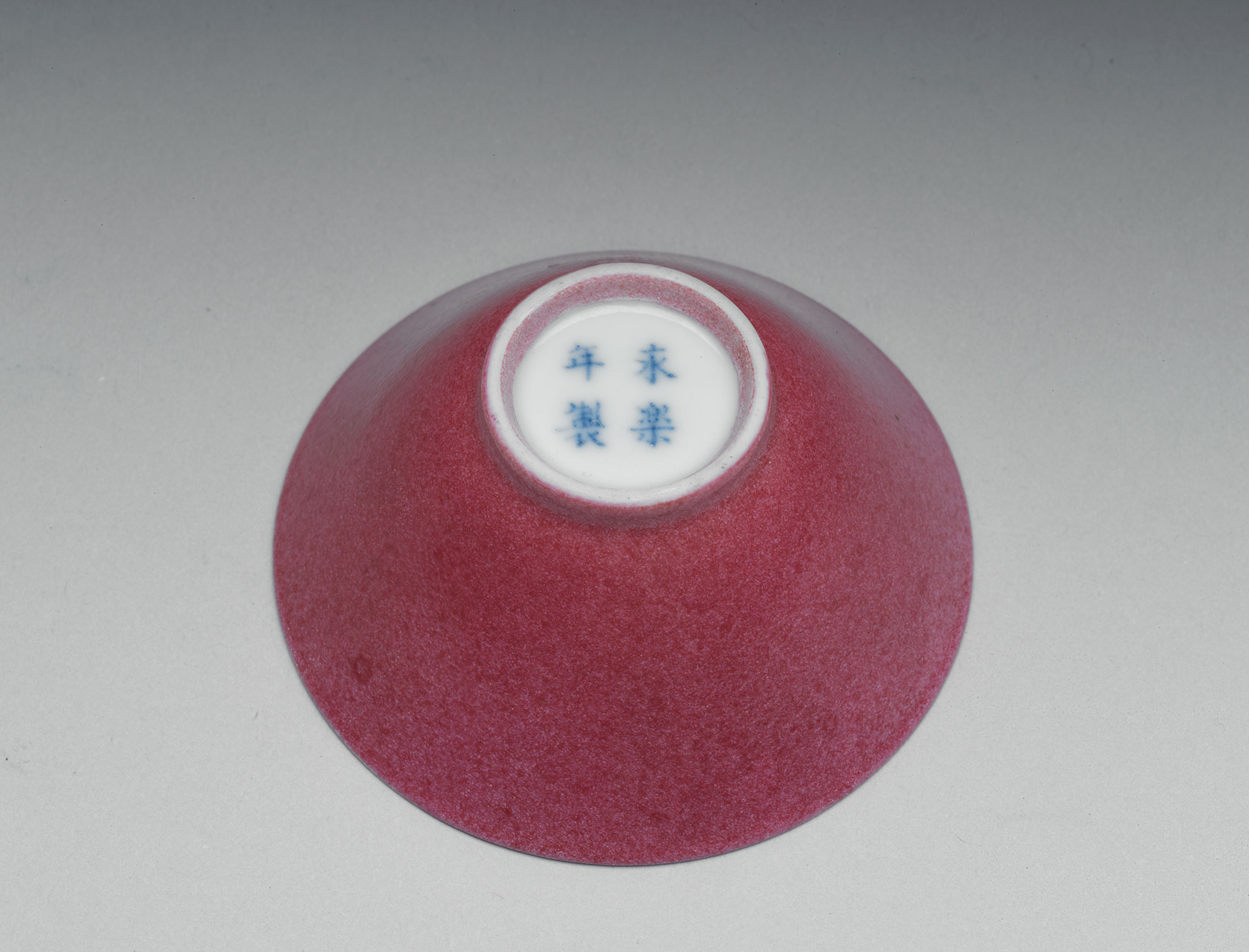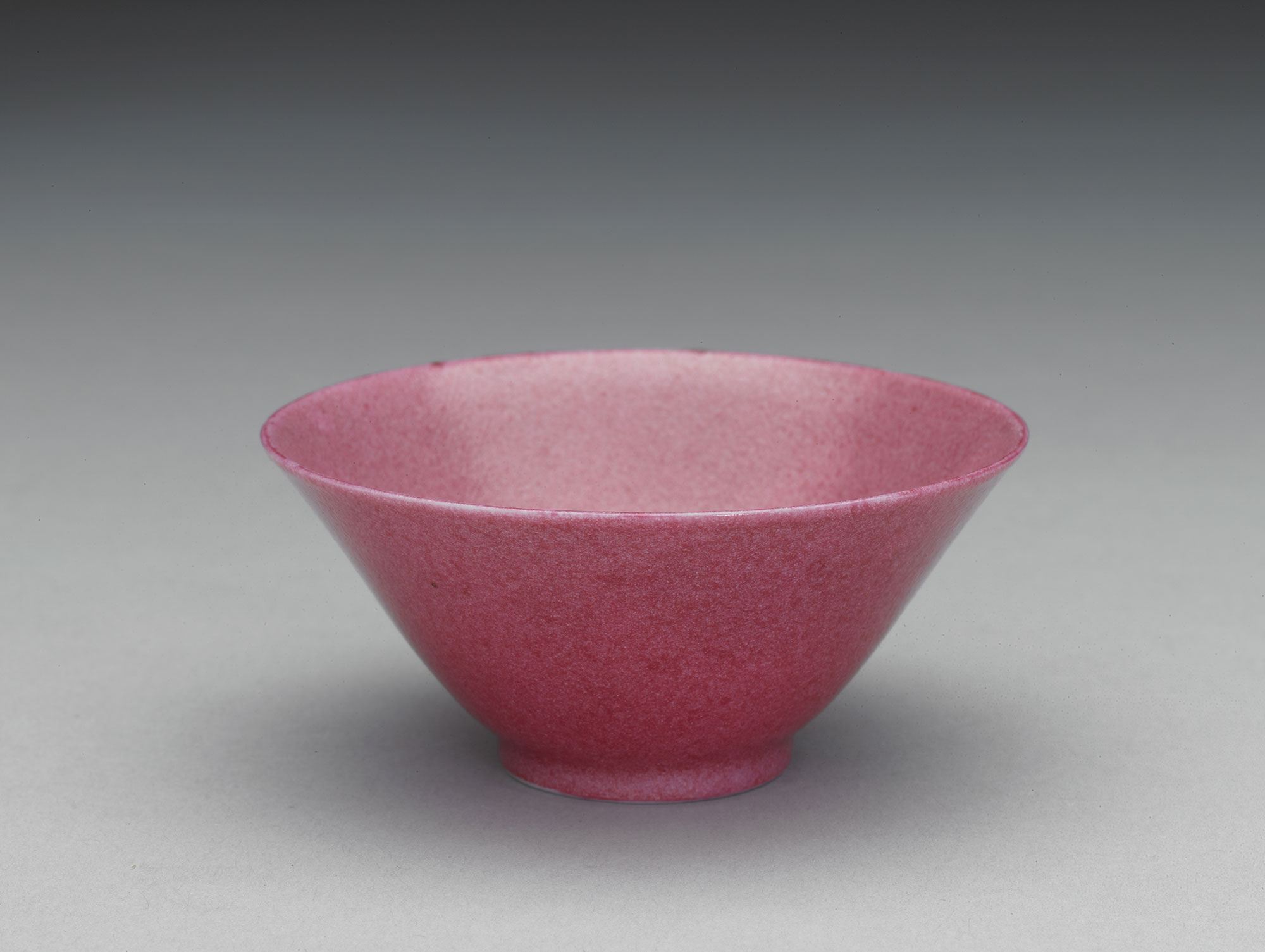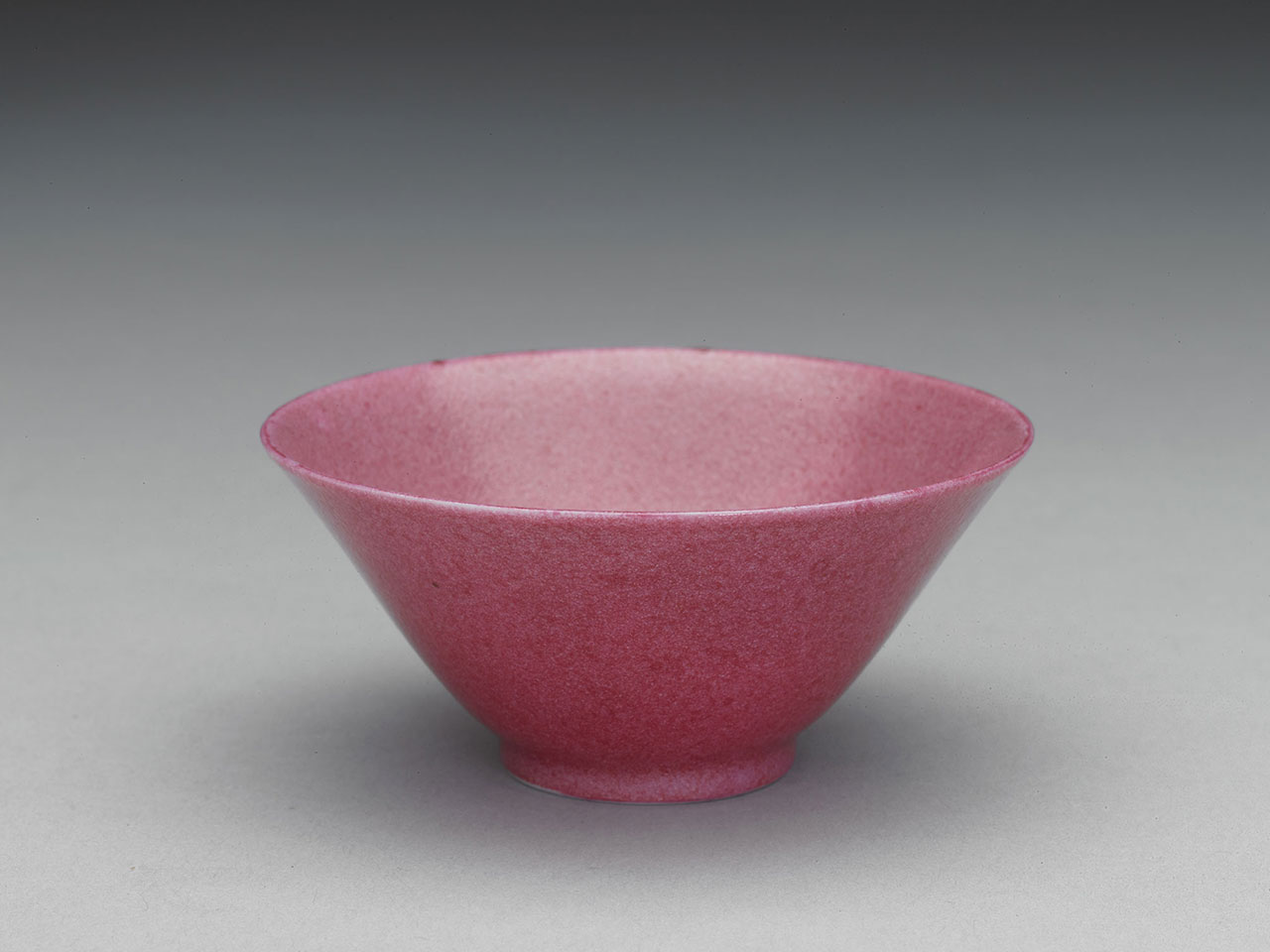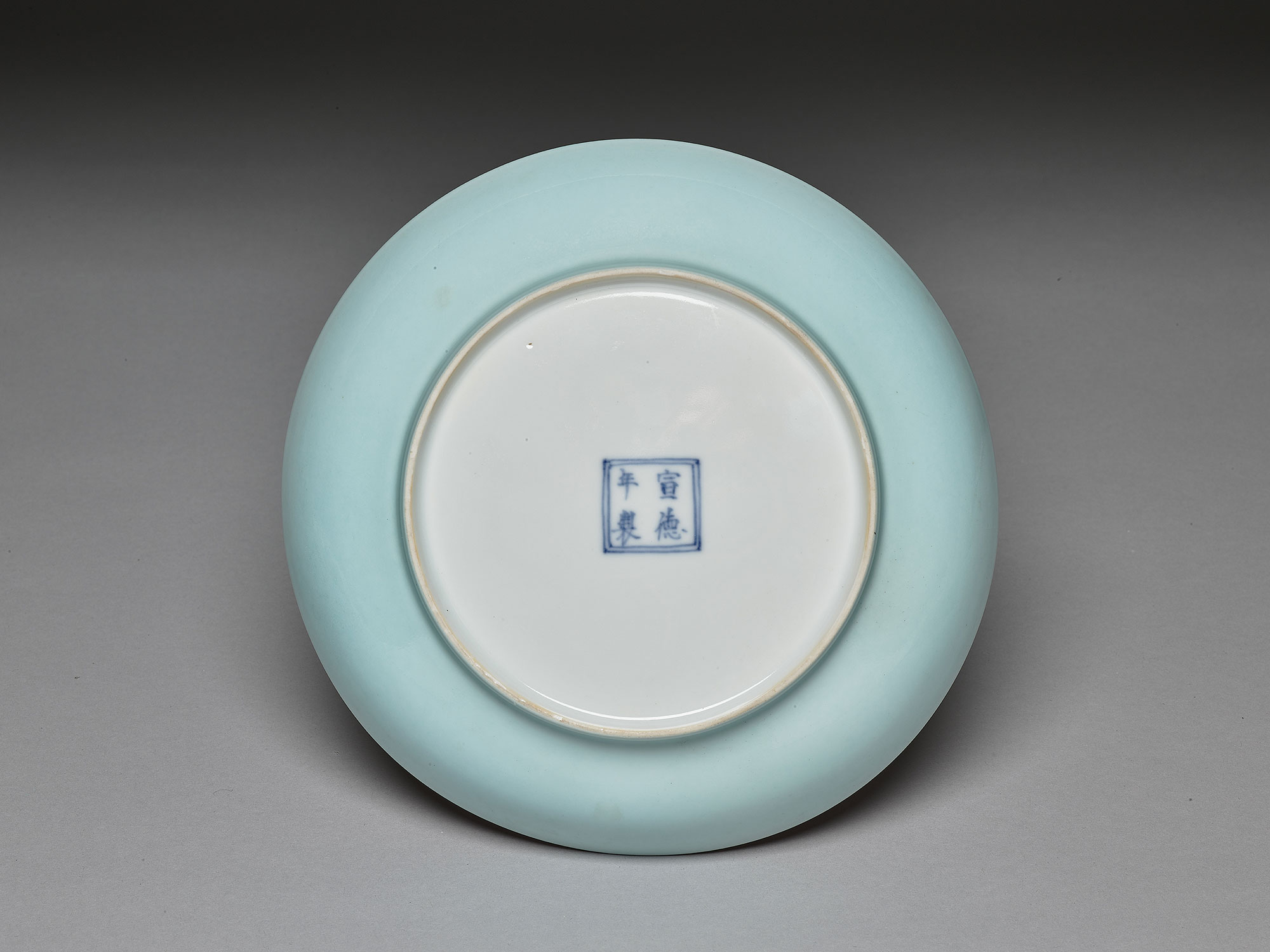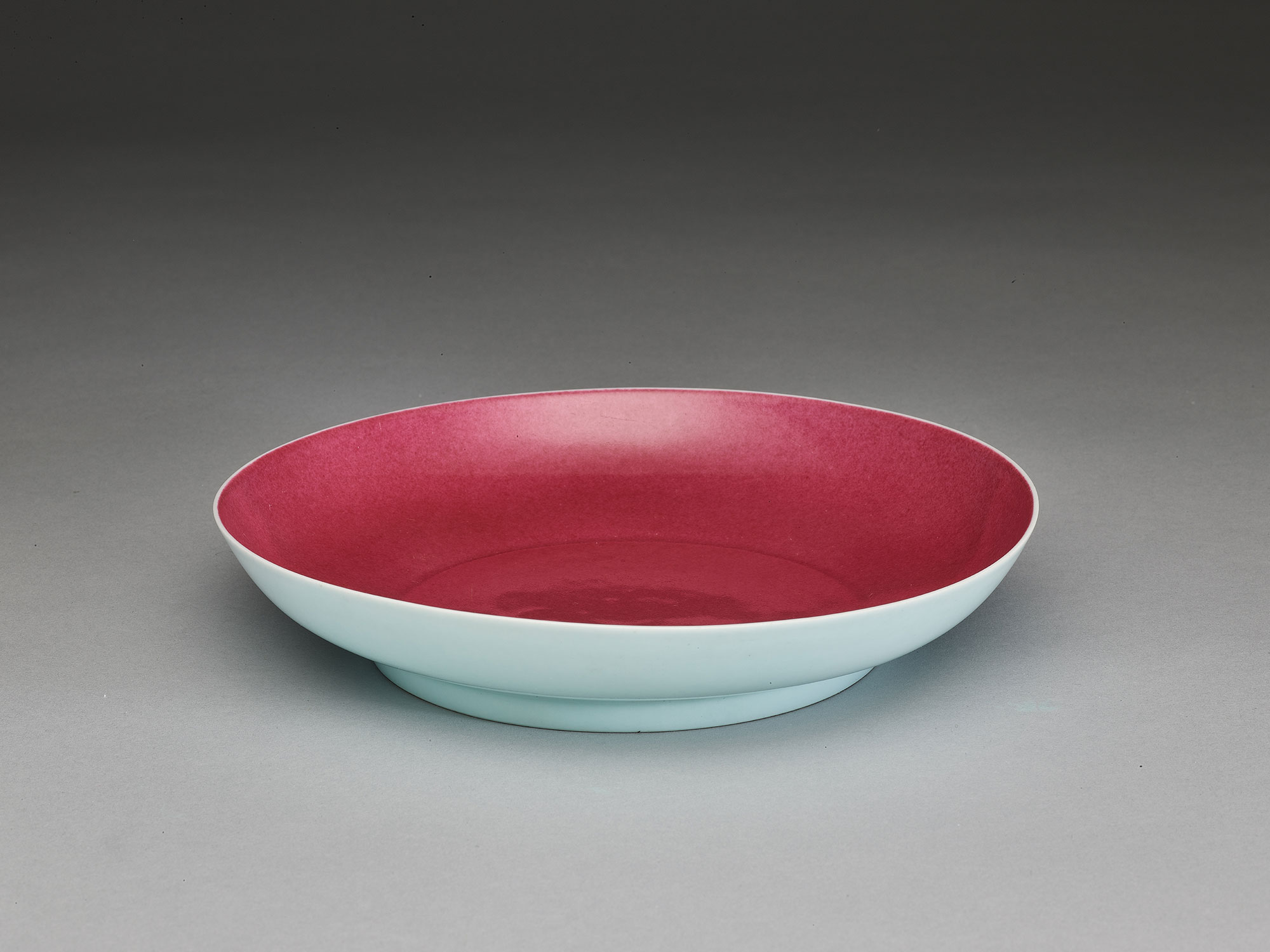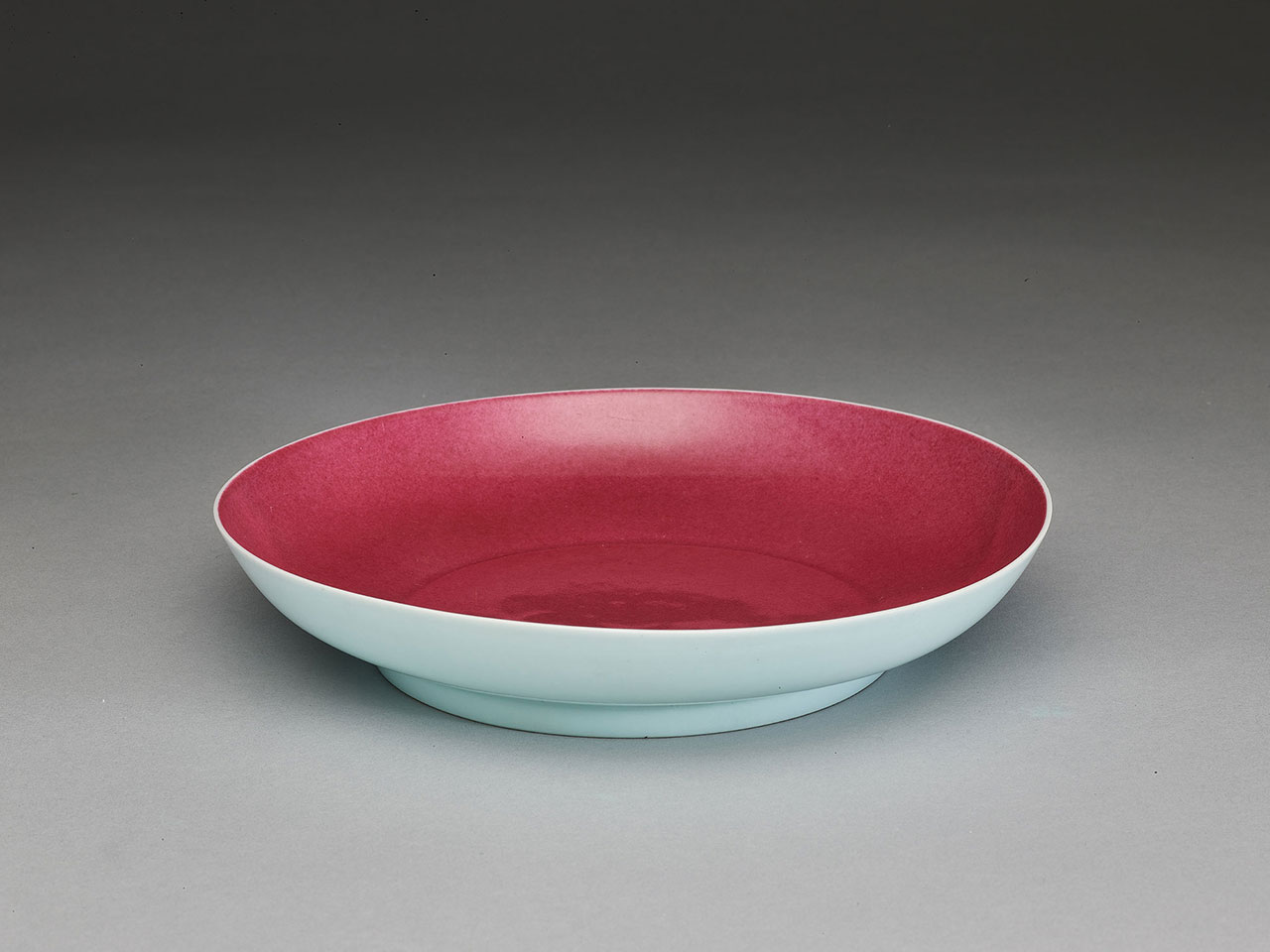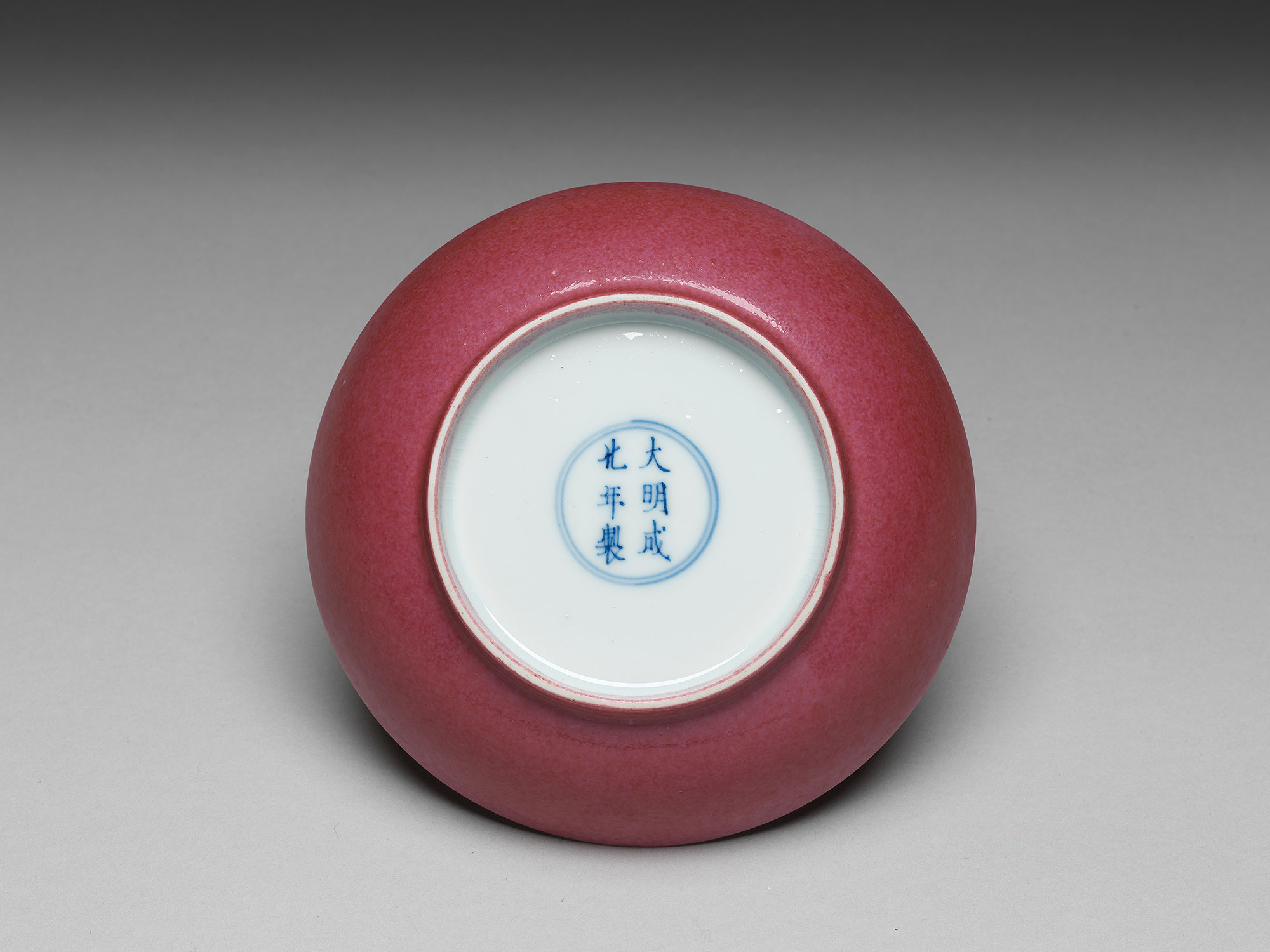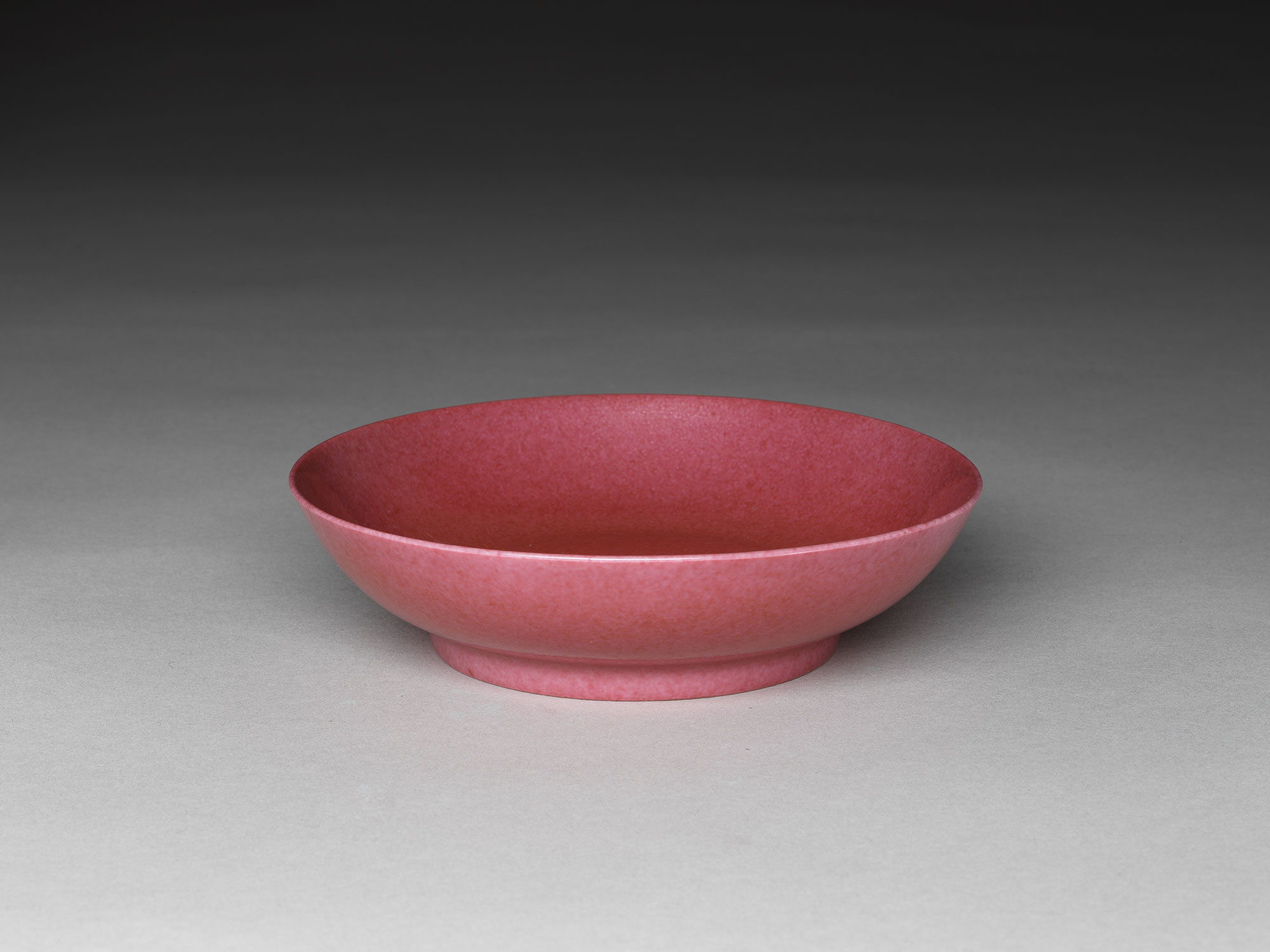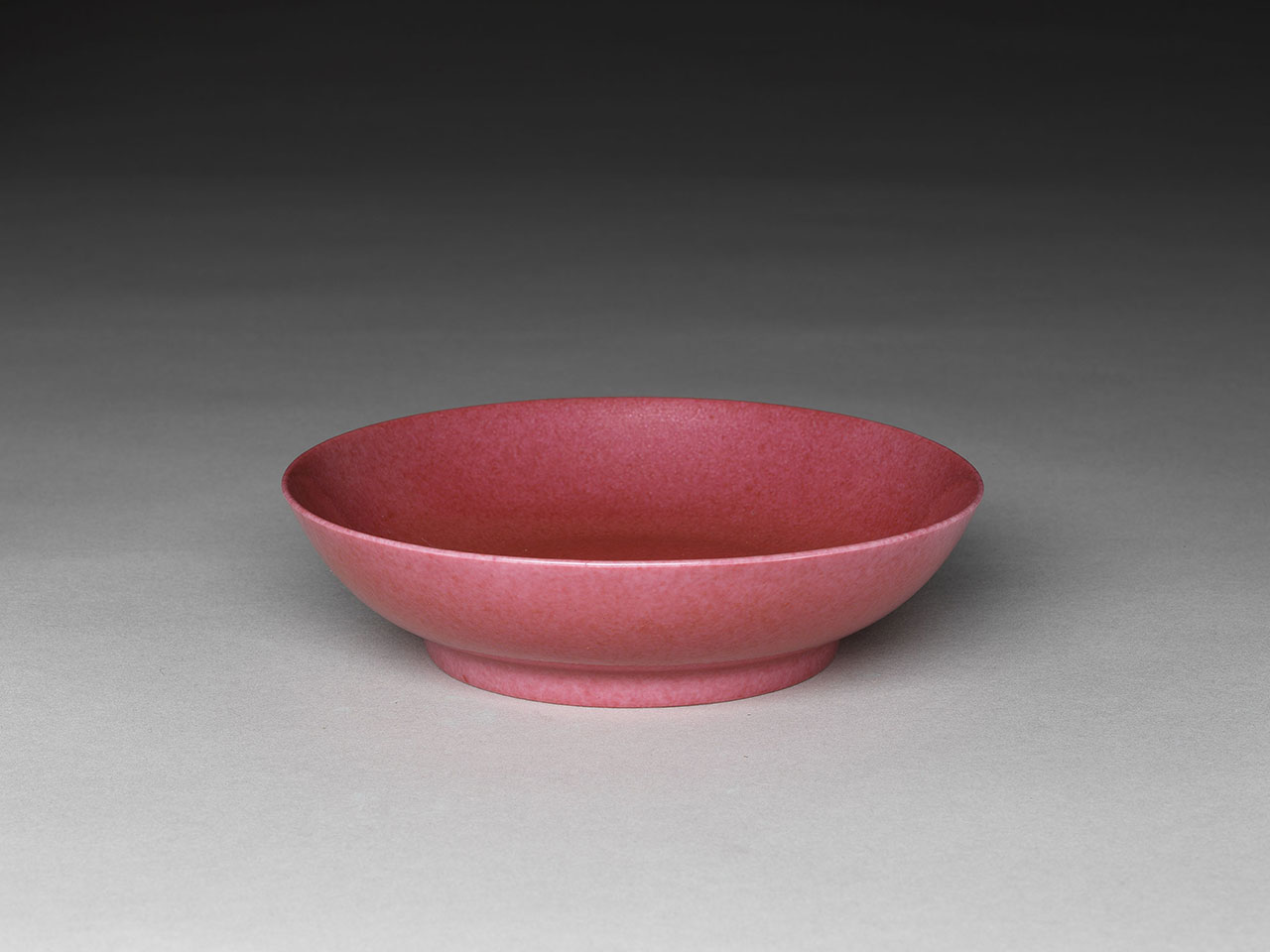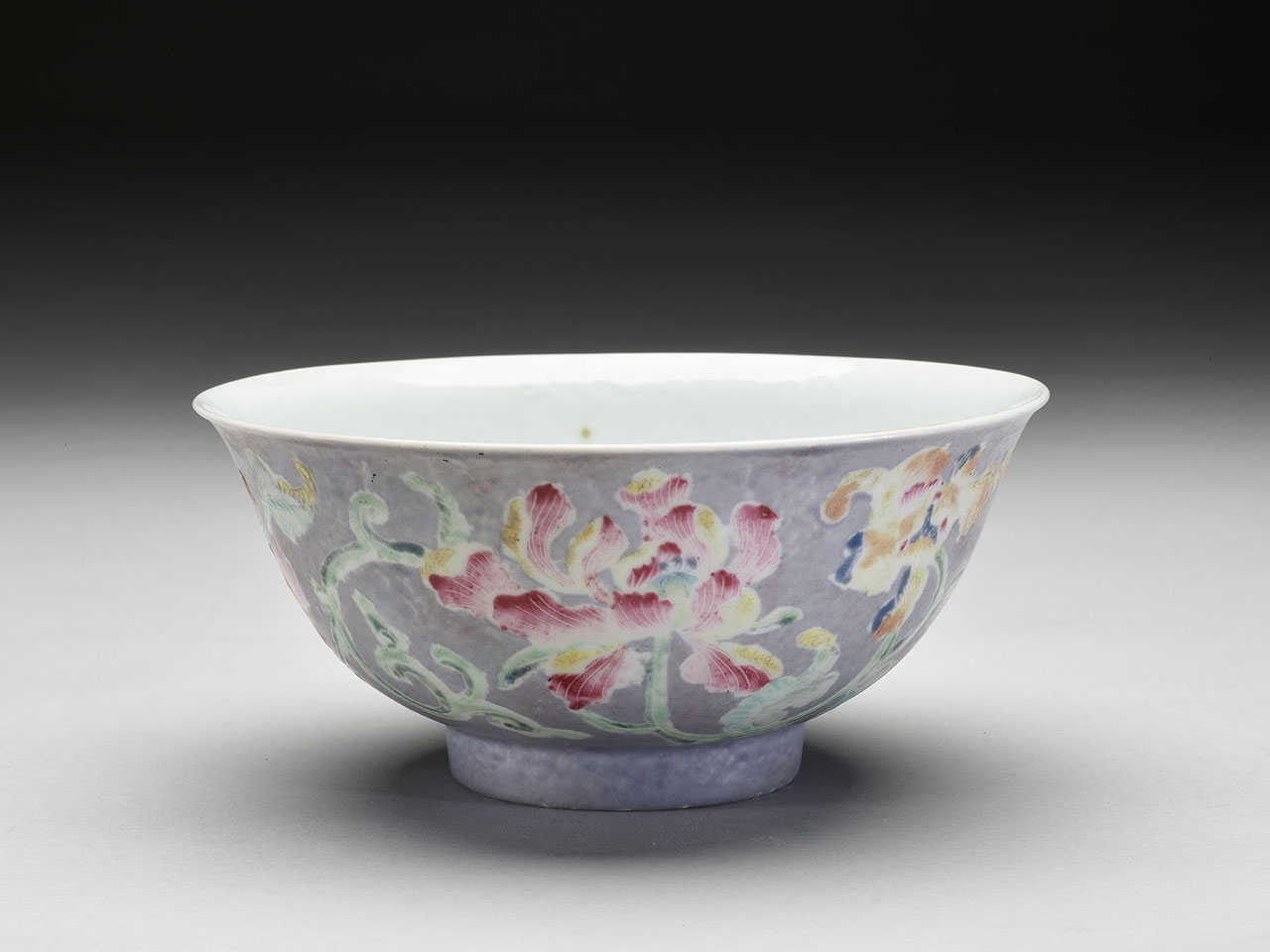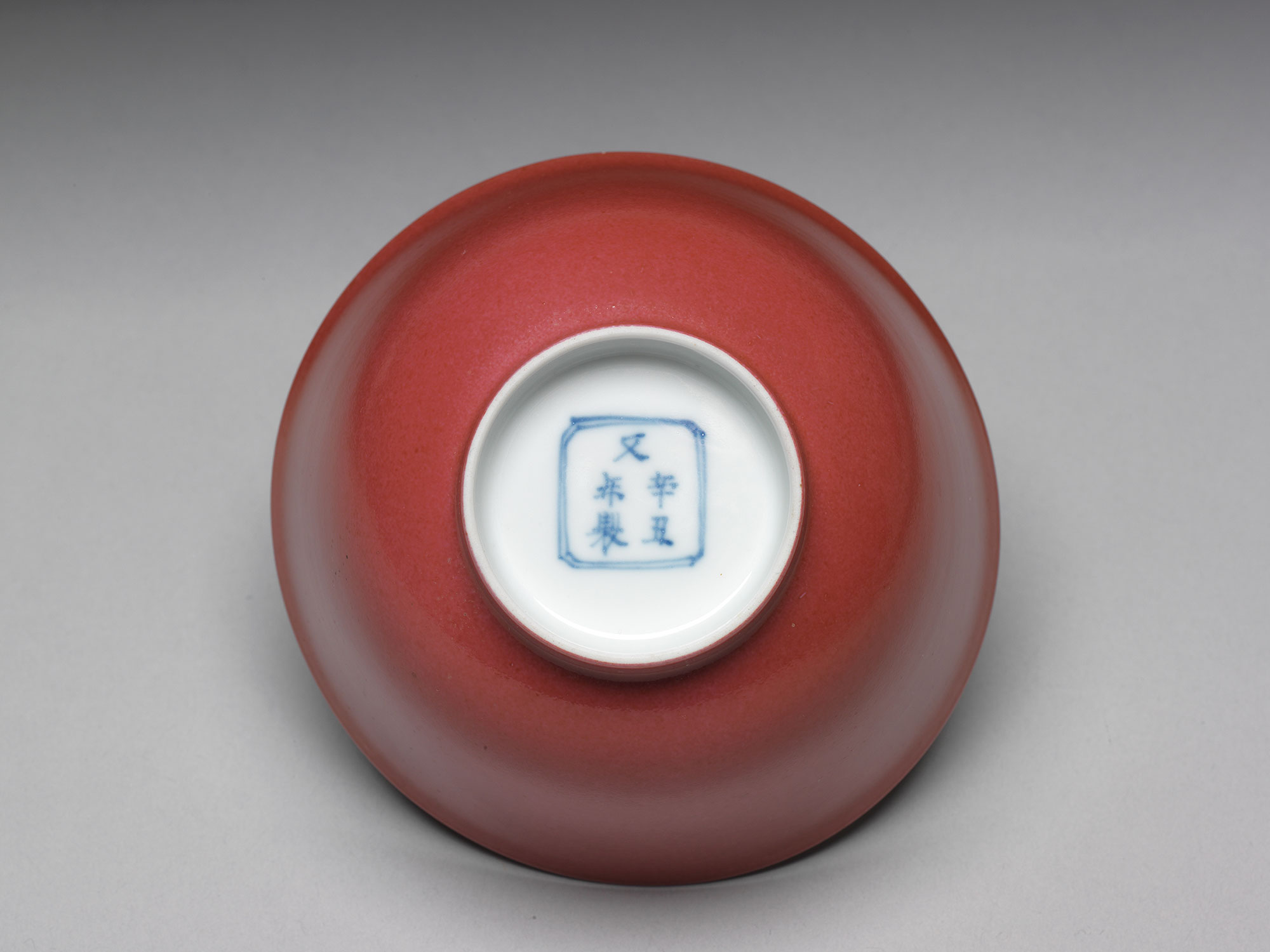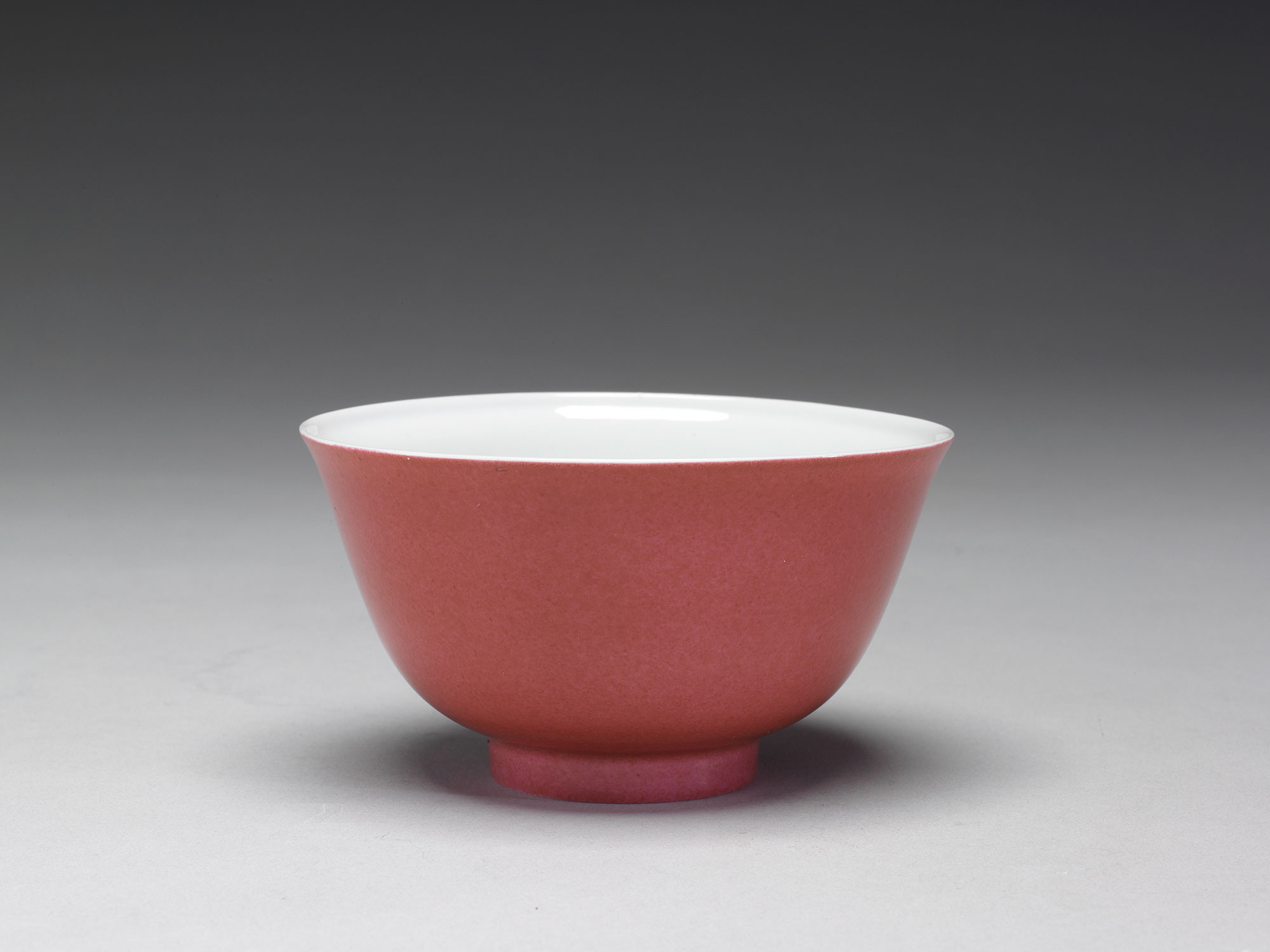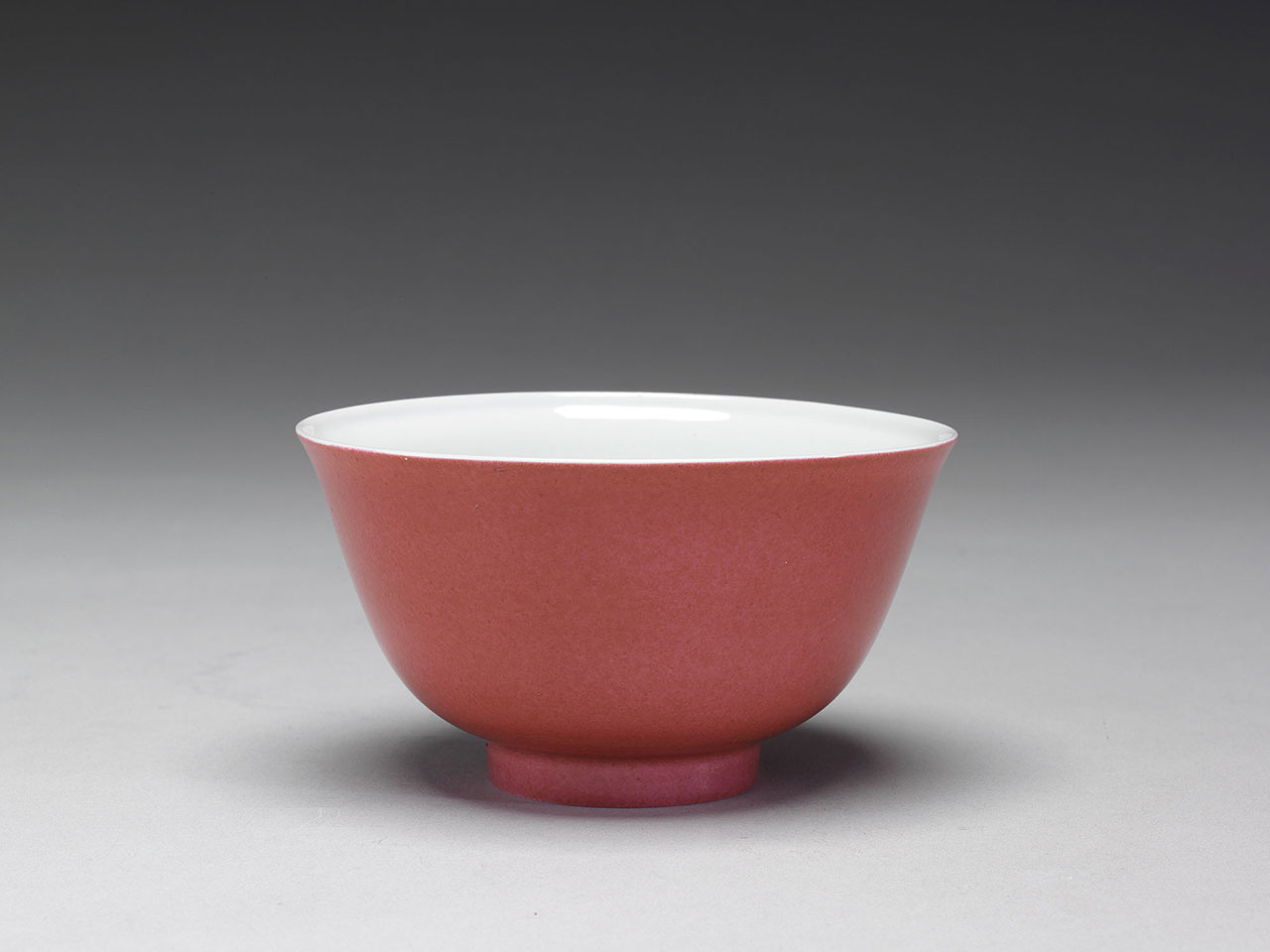Testing Pieces from the Emperor’s Experimental Workshop
The Kangxi Emperor adored the Western wares with painted enamels, and further began the development of new pieces locally. The exhibits reflect this development, so they can be regarded as the testing pieces from the emperor’s experimental workshop in the starting stage.
Every collection from the Qing palace in the National Palace Museum is issued with an archival number, and through the registration method from the early public period, we are able to trace the original storing location of these pieces before the 14th year of republic period (1925). The testing pieces have “lu 律” in their archival numbers, which provides us with the storing circumstance in the Jingyang Palace, Forbidden City. From the decorating glaze colours and patterns, these artworks can be divided into two categories; the first group is the rouge colour series, which was produced by craftsmen with local techniques to imitate the Western gold-red colour. The “gold” element was added into the glaze to achieve the innovative finish. The other group is with white porcelain bowls and plates, and attempting to paint polychrome figures and flowers with imported pigments on the pieces.
Words from the Local
Yang Ling (?-1724), who once posed as the governor of Guangdong and the governor in general of Guangdong and Guangxi. Yang had submitted three memorials to the throne (1716-1718) during his duty, and not only had he reported the purchase of Western enamel pigments that travelled through places, but also he suggested strongly in his words in repeat regarding the process of the local talents enthusiastically attempting to produce wares with painted enamels and to develop rouge pigments.
Production Year
None of the testing pieces in this group stated that they were made in the reign of Kangxi. The only recognizable mark is the “you xin chou nien zhi 又辛丑年製” (1721). There are some pieces marked as from the Ming dynasty. If we compare them with the standard marks from the Ming dynasty, we will recognize the marks from the reign of Yongle, Xuande, Chenghua, and Hongzhi have obvious differences to the standard marks; therefore, it is known that they are imitations of the Ming mark in a later period. Moreover, since the forms of some of these works have the characteristics of the Kangxi period, thus the earliest production year is inferred to be from the reign of Kangxi.
Portraits of Western Lady
Each of the four panels on this bowl is painted with a Western lady in varied facial expressions and postures. Since the painting style and technique are different from the original mainland’s model, thus the period is referred to the mid-17th century and later, when the miniature portraits appeared and popularized in the development of Western painted enamels. This also indirectly responses to the descriptions from the missionary, Matteo Ripa’s letter in 1716, which stated that the Kangxi Emperor demanded him and Giuseppe Castiglione to do painted enamels, and explained the Western style existing in the starting stage of imperial porcelain with painted enamels of Kangxi.
Coiled Chi Dragon Pattern and Geometric Background with Optical Illusion
This bowl is decorated with five coiled chi dragon patterns. To compare with the porcelains made from Jingdezhen during the same time and the copper-base products manufactured in Guangdong in the later period, we can approximately illustrate the phenomenon that similar coiled chi dragon patterns appeared in the reign of Kangxi, gradually becoming a trend, and then to be adorned continuously throughout the 18th century. Besides, the exterior of the bowl is painted with the cubic pattern on the background, which is formed by overlapping squares in even sizes. The blue-colour cross is placed on one side of each cubic shape, and not only does it accentuate the design, but also enriches patterns on the surface.
